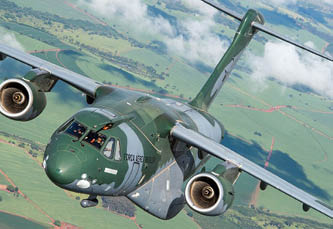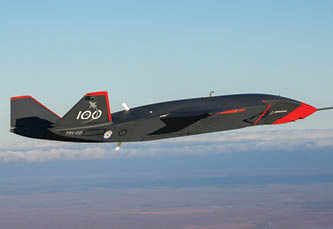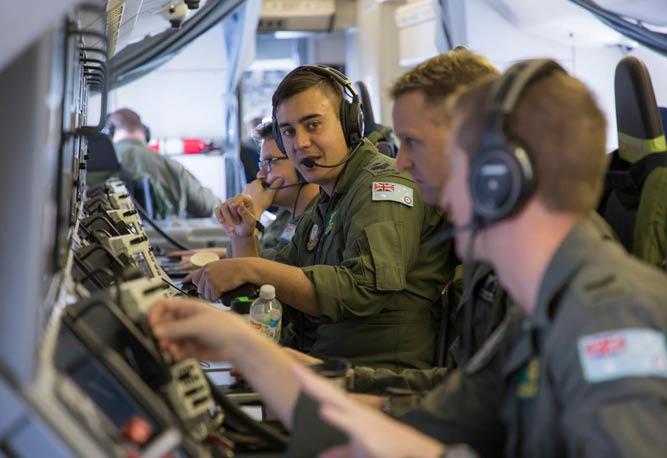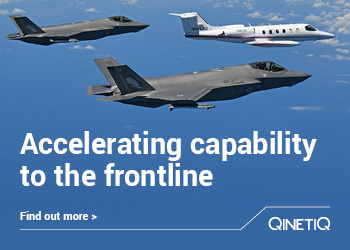The recent weeks have been busy and exciting times for Embraer Defense & Security, the C-390 Millennium programme is going from strength to strength.
The KC-390 Millennium, the air-to-air configuration of the C-390 Millennium, was on display at the Farnborough Air Show and the Royal International Air Tattoo (RIAT) in the United Kingdom in July. Military and industry guests were taken on a tour of the aircraft, and they were impressed to see this new generation multi-role military transport aircraft. They had the opportunity to learn how it delivers unrivalled mobility and cargo capacity in the medium airlift aircraft segment, rapid role re-configuration, high availability, improved flight safety and reduced life cycle costs, all in a single platform. Powered by two International Aero Engines AG (IAE) V2500-E5 engines, the C-390 is ideally sized and suited for missions undertaken by the Royal Australian Air Force (RAAF).
In addition to the Brazilian Air Force, the aircraft has been acquired by NATO nations including Portugal and Hungary. Most recently, on June 16, the Netherlands Ministry of Defence announced the selection of a fleet of five C-390 Millennium aircraft, highlighting the performance and operational output of the aircraft, to succeed their current fleet of C-130 Hercules.
The Netherland’s Ministry of Defence conducted rigorous research when comparing to the C-390 Millennium and the C-130J, and concluded, “that the C-390 has higher availability and needs considerably less maintenance. This means that more hours can be flown with the same number of aircraft. The C-390M has a multi-mission concept, whereby the required mission types are incorporated in a standard configuration. The C-390M scores higher than the C-130J on a number of operational and technical requirements and meets operational needs. The C-130J can meet the Dutch operational requirement but must be equipped with various mission-specific elements that are not available in the COTS/MOTS configuration we require. The C-390 Millennium is, besides a tactical deployable aircraft, also more suitable to be used for strategic movements than the C-130J.”
Of special note, the Dutch Ministry identified, “The C-390M requires less maintenance and can provide more effective flight hours per aircraft than the C-130J. Based on the information obtained, the C-390M can meet the minimum requirement of 2400 flight hours with four aircraft. With five aircraft, 4000 can be flown. On the other hand, based on the information obtained in the research phase, the C-130J requires at least five aircraft for 2400 flight hours. For the C-130, five aircraft are not sufficient to meet the requirement of 4000 hours”.
The C-390 for the Netherlands will be the platform that will support to build the 5th Generation Air Force, being part of a “Network Centric Warfare”. A user’s group, which will include Embraer and customers such as the Brazilian Air Force, will be created, like other successful international programs, which will bring logistical synergies, share technological solutions, and guarantee a platform’s update throughout its life cycle.
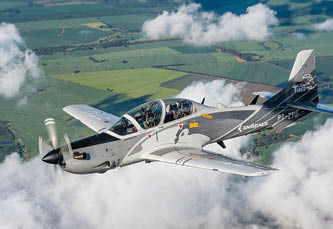
Since its first delivery to the Brazilian Air Force (FAB), in 2019, the KC-390 Millennium has proven its capability, reliability, and performance. The aircraft has been used in operations to transport equipment and medical supplies, ranging from liquid oxygen to vehicles across Brazil at the peak of the COVID-19 outbreak. Brazil’s current fleet of KC-390s, all in its refuelling configuration, stands at five aircraft of the twenty-two on order. The fleet has exceeded 5,000 flight hours to date with a mission completion rate of 97% which is outstanding availability and productivity for aircraft in this category.
Of special note, the KC-390 Millennium has recently resupplied personnel, by airdrop in Antarctica, reinforcing the aircraft’s performance and utility in challenging environments and operational conditions.
The aircraft has demonstrated and proven that it can swiftly and effectively respond to situations such as displaced person evacuation missions far from home, humanitarian aid and disaster relief missions and the full range of military air transport operations including dirt and damaged field operations.
The versatility of the C-390 Millennium makes it highly capable and compatible to operate alongside other air transport aircraft in Australia. As a multi-role aircraft, the C-390 Millennium enables Air Forces and operators to streamline the overall number of platforms it needs to operate and maintain, meaning more cost savings and better use of aircraft resources. In comparison to other medium-sized military cargo aircraft, it flies faster (470kts) and carries more cargo (26 tonnes).
The aircraft’s flight control systems use an integrated avionics system and fly-by-wire flight control which is proven to reduce pilot fatigue. In addition, the aircraft is equipped with an Electronic Warfare Self-Protection System (EWSP) and protective ballistic armour for critical systems which increases its survivability during operations in hostile environments. The C-390 possesses dual certification enabling it to be used for both military and civil operations and is compatible with fire-fighting systems.
It is also timely to provide an update on the most recent milestones of the A-29 Super Tucano. The worldwide fleet of the A-29 Super Tucano aircraft recently passed 500,000 flight hours reflecting the aircraft’s reliability, performance, and dependability.
The A-29 Super Tucano is a durable, versatile, and powerful turboprop aircraft capable of carrying out a wide range of missions while operating from unimproved runways. The aircraft has been selected by more than 15 air forces worldwide and more than 260 units have been delivered to date.
Most recently, Sierra Nevada Corporation (SNC) has delivered the third and final A-29 Super Tucano aircraft to US Air Force Special Operations Command (AFSOC). The aircraft are intended for AFSOC’s Combat Aviation Advisor (CAA) mission which is designed to build international partner capacity. The A-29 Super Tucano is a perfect fit with JTAC Training requirements of the Australian Defence Force.
Embraer has had a long presence in Australia, dating back to 1978 when the Bandeirante EMB110 started operations in the country. Embraer’s portfolio of aircraft in the country has evolved and now there is a sizeable presence of commercial and executive aircraft in the country, such as the E-Jets, the Phenom 300E and the Legacy 500. Embraer’s Defence and Security products will bring value to the country, just as how Embraer’s existing fleet of aircraft are making a difference in the country.



